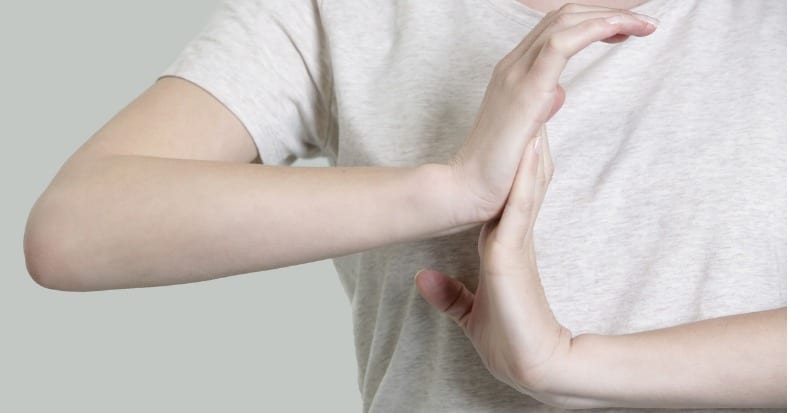Carpal tunnel syndrome (CTS) is the most common “peripheral neuropathy” (pinched nerves in the arms or legs) and is known to be caused by prolonged repetitive, forceful grip-related tasks involving the hands. The condition occurs when pressure is placed on the median nerve as it passes through the carpal tunnel, either from inflammation, mechanical injury, or both.
The position of the wrist and hand are very important, as the pressure inside a healthy wrist “normally” doubles when we bend the wrist/hand. However, when CTS is present, the pressure doesn’t double at the extreme end-ranges of motion. Rather, when inflammation is present, pressure can increase up to six times at the end-ranges of motion! This can be highly problematic at night because we don’t have much control over how we position our wrist. Not only can increased pressure on the median nerve cause you to wake up but it can set the stage for worsening symptoms in both the short and long term. This is why doctors often advise CTS patients to wear a night splint and to avoid prolonged awkward wrist positions during the day when working.
In a 2014 study involving 31 healthy college students, researchers used ultrasonography to measure median nerve deformation as participants bent their wrists and performed finger movement-intensive movements. Investigators observed that the median nerve flattened out with as little as 30º of wrist extension and became swollen after students performed rapid mobile-phone keying for five minutes with a corresponding increase in the cross-sectional area of the carpal tunnel. In a follow-up experiment, the research team found that the motion involved with clicking a mouse repeatedly had an even greater effect on the median nerve. The authors concluded that the increased use of electronic devices, especially in non-neutral wrist positions, increases the risk of CTS.
A literature review performed in the same year came to a similar conclusion: prolonged exposure to non-neutral wrist postures increased CTS risk by at least twofold.
In order to reduce pressure on the median nerve, doctors of chiropractic often use a combination of wrist splinting, patient education (including tool/workstation modifications), nutritional recommendations, and manual therapies. In many cases, this can lead to a successful outcome without the need for more invasive treatments. However, when necessary, your chiropractor can refer you to the appropriate provider and/or co-manage the condition with them.
